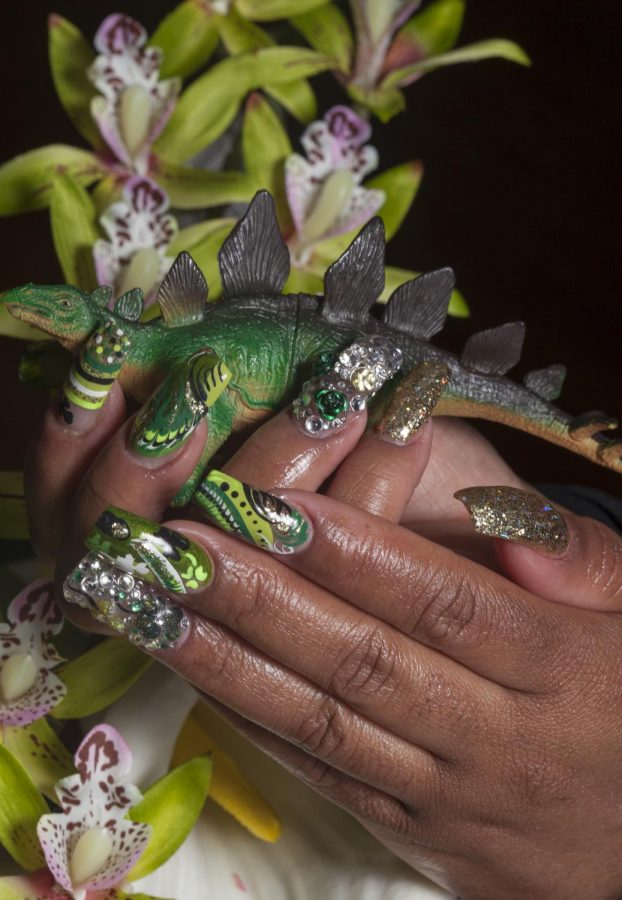Local photographer showcases salon subculture
February 20, 2017
Every part of the canvas is filled with precise detail of swirls, sparkles and lines. The colors mimic a rainbow, filled with a vast range of shades and brightness. Turns out, though, the canvas used is only 1 inch long—a human fingernail.
Local photographer Helen Maurene Cooper uses her latest book, “Paint & Polish,” to document the predominantely African-American and Hispanic nail and salon culture on the West Side. She combines portraiture and detailed photographs to show the intense labor that goes into nail art at salons. The book will be published and available for purchase online Feb. 23.
“Hispanic and African-American women get their nails done all the time, but the stereotype is that it’s all at Asian salons,” Cooper said. “I had never seen examples of Hispanic and African-American women who were salon owners, but it’s actually a huge deal.”
Cooper has been photographing salon subculture for the past eight years. While getting her own nails done, Cooper said she noticed the intricate designs some women were getting and asked where they got them. She said that was when she found out the salons provided a community for women on the West Side.
“The women who now own these salons all kind of come out of a genetic and non-genetic genealogy,” Cooper said. “[For example], two different women had different salons, the people who worked for them [may] go on to their own salons, or some of them were daughters of the people that owned salons.”
This sense of familial community is also what supports the salons, Cooper said. Economically, it is compelling because they are funded by families and separate themselves from banks, she added.
“[Salon owners] help it come together, then patronize that space, and they become staples of communities,” Cooper said.
Ryan Blocker, a collaborator on the project who wrote essays to go with the photos to enhance the women’s narratives, said he wanted to recognize the network of women as professionals and business owners.
“I started my [essays] by talking about my mother; whenever she recognized someone with [painted] nails, she would compliment them,” Blocker said. “I realized that it was a way of saying, ‘I see you as you wish to be seen in a world that often misrecognizes black women.’”
Without the help of banks, these salon owners—specifically women of color—go against the grain of the capitalistic economy of the U.S., said photo historian Roula Seikaly.
“For these women of color, taking the salon and own[ing] it themselves and mak[ing] contributions to this capitalistic society that doesn’t necessarily want them or acknowledge who they are is pretty significant,” Seikaly said.
Seikaly said she appreiates how Cooper approaches photography—photographing populations who would not recieve much attention otherwise. These are smaller stories that should be told, she added.
Blocker said African-American and Hispanic women have shaped many trends in popular culture and fashion, which has been often invisible. This project re-investigates history and looks into understanding and recognizing their creative labor and contribution, he added.
“When you look at these photos, you realize the skill is on-par with a professional painter [with] their use of colors, choices, details, and terminologies,” Blocker said. “I hope people understand these women as artists and business owners.”








